Azure Policy
Introduction
In the dynamic realm of cloud computing, maintaining compliance and ensuring effective governance are paramount. Azure Policy emerges as a critical tool in this context, offering a robust framework for enforcing organizational standards and assessing compliance across Azure environments. This article delves into the nuances of Azure Policy, outlining its key features, applications in enhancing cloud governance, comparison with Azure RBAC, setup procedures, best practices, and real-world examples.
Key Features of Azure Policy
Azure Policy boasts a suite of features designed to streamline and enforce governance and compliance in Azure environments. Each feature contributes to a more controlled and compliant cloud infrastructure:
- Policy Definitions:
At the heart of Azure Policy is the concept of Policy Definitions. These are essentially the rules or criteria that Azure resources need to comply with. They can be custom created or selected from a built-in library provided by Azure. Policy Definitions enable administrators to define what should or should not be allowed within the Azure environment. - Initiatives:
Initiatives in Azure Policy are collections of Policy Definitions that work together towards a common goal. By grouping related policies, initiatives simplify the management of policies and ensure a comprehensive approach to specific governance objectives. This feature is particularly useful for organizations looking to enforce a broad set of standards or regulatory requirements. - Resource Evaluation:
Azure Policy continuously evaluates the state of Azure resources to check for compliance with the established policies. This evaluation process is automatic and ensures that any new or existing resources align with the defined governance criteria. In case of non-compliance, Azure Policy provides insights and details about the specific resources and the policies they're violating. - Remediation:
One of the key strengths of Azure Policy is its ability to not just identify non-compliant resources but also to take corrective actions. Remediation tasks can be automated or performed manually, allowing administrators to enforce compliance proactively. This feature significantly reduces the time and effort required to maintain compliance across a large number of resources. - Integration with Azure Services:
Azure Policy is designed to integrate seamlessly with other Azure services, enhancing its functionality and applicability. This integration extends the scope of Azure Policy, making it a central component of the Azure governance ecosystem.
Common Pitfalls and Challenges in Implementing Azure Policy and How to Overcome Them
- Overly Restrictive Policies:
- Pitfall:
Implementing policies that are too restrictive can hinder operational flexibility and innovation. - Solution:
Start with less restrictive policies and gradually tighten controls as needed. Engage with different teams to understand operational requirements and balance them with governance needs.
- Pitfall:
- Policy Misalignment with Business Objectives:
- Pitfall:
Policies that do not align with business objectives can lead to inefficiencies and non-compliance. - Solution:
Involve stakeholders from various departments in the policy creation process to ensure alignment with business goals and compliance requirements.
- Pitfall:
- Complexity in Policy Management:
- Pitfall:
Managing a large number of complex policies can become cumbersome and error-prone. - Solution:
Use initiatives to group related policies, simplifying management. Regularly review and consolidate policies to reduce complexity.
- Pitfall:
Aligning Azure Policy with GDPR and HIPAA Compliance Standards
- Data Residency and Sovereignty (GDPR):
Azure Policy helps ensure compliance with GDPR by allowing organizations to control and restrict the geographical location of their data. Policies can be set to ensure resources are deployed only in specific regions, aligning with GDPR's data residency requirements. - Protection of Sensitive Data (HIPAA):
For compliance with HIPAA, Azure Policy can enforce the encryption of data in transit and at rest. Policies can mandate the use of specific security measures for data handling and storage, thus safeguarding sensitive health information. - Access Control and Audit (GDPR and HIPAA):
Azure Policy supports the enforcement of strict access controls and auditing measures, which are critical for both GDPR and HIPAA compliance. By defining who can access what resources and tracking resource changes, it ensures adherence to these compliance standards.
Challenges in Cloud Governance and Compliance Addressed by Azure Policy
- Complex Regulatory Compliance:
With the ever-evolving landscape of regulatory requirements, such as GDPR and HIPAA, organizations often struggle to stay compliant. Azure Policy helps by automating compliance checks and enforcing regulations across all Azure resources. - Consistent Policy Enforcement:
Ensuring consistent application of governance policies across diverse and distributed cloud resources is challenging. Azure Policy addresses this by centrally managing and applying policies across the entire Azure environment. - Resource Configuration Management:
Manually monitoring and maintaining optimal configurations for a multitude of cloud resources can be daunting. Azure Policy automates this process, ensuring resources are configured according to best practices and organizational standards.
How Azure Policy Enhances Cloud Governance?
Azure Policy significantly bolsters cloud governance, providing a structured and efficient approach to managing and maintaining compliance in Azure environments. Here's how it enhances governance:
- Automated Compliance Enforcement:
Azure Policy automates the process of enforcing and maintaining compliance with organizational policies and regulatory standards. This automation minimizes human errors and ensures consistent application of governance rules across all Azure resources.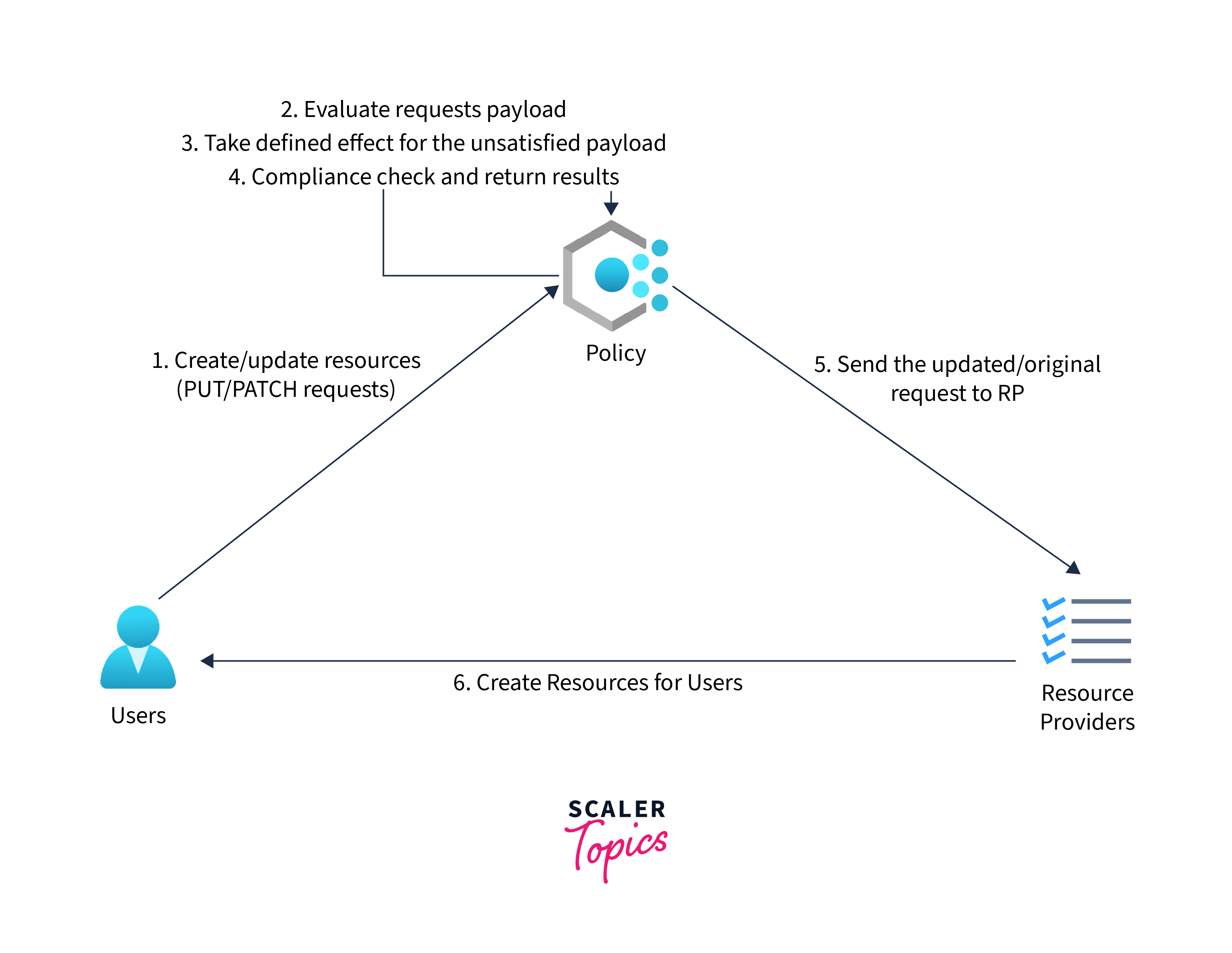
- Real-Time Governance:
The continuous evaluation feature of Azure Policy allows for real-time governance. It constantly scans and assesses the state of resources, ensuring that any deviations from the set policies are quickly identified and addressed. This ongoing oversight is crucial in maintaining a compliant and secure cloud environment. - Customizable Policy Definitions:
Azure Policy offers the flexibility to define custom policies tailored to specific organizational needs. This customization ensures that governance strategies are aligned with unique business requirements and compliance standards. - Comprehensive Coverage:
With its integration across various Azure services, Azure Policy provides a comprehensive governance solution. It covers a wide range of resource types and services within Azure, ensuring that governance and compliance are enforced throughout the cloud infrastructure. - Visibility and Accountability:
The reporting and compliance dashboard features of Azure Policy provide clear visibility into the compliance status of resources. This visibility is key for accountability, enabling stakeholders to understand their compliance posture and make informed decisions.
Azure Policy vs. Azure Role-Based Access Control (RBAC)
Understanding the distinct roles of Azure Policy and Azure Role-Based Access Control (RBAC) is key to implementing effective cloud governance. While both play critical roles in Azure security and compliance, they serve different purposes and complement each other.
| Aspect | Azure Policy | Azure RBAC |
|---|---|---|
| Primary Focus | Ensures resources comply with corporate standards and service level agreements. | Manages who has access to Azure resources, what they can do with those resources, and where they have access. |
| Functionality | Evaluates, enforces, and remedies resource configurations and properties. | Provides fine-grained access management to Azure resources. |
| Scope of Application | Applies to resource properties, location, and configuration. | Applies to user actions and operations within Azure. |
| Enforcement | Automatically applies configurations and can prevent non-compliant resources from being deployed. | Controls access to resources but does not enforce configuration of resources. |
| Compliance Management | Provides compliance data and reports regarding resource configurations and standards. | Does not directly provide compliance reporting, but ensures only authorized users perform actions. |
| Customization | Allows creating custom policies for specific organizational needs. | Allows custom role definitions to grant or restrict actions at a granular level. |
| Use Case Examples | Ensuring VMs are deployed in specific regions, or certain services are disabled. | Granting a user permission to manage VMs but not access to databases. |
Setting Up Azure Policy
Setting up Azure Policy is a straightforward process that enables organizations to enforce governance and compliance across their Azure resources. Here's a step-by-step guide to setting up Azure Policy:
-
Access Azure Portal:
Log in to the Azure Portal. Ensure you have the necessary permissions to create and assign policies. -
Navigate to Azure Policy:
In the Azure Portal, search for and select ‘Azure Policy’. This takes you to the Azure Policy service page. -
Create Policy Definitions:
- Built-in Definitions:
Azure provides a range of built-in policy definitions. You can browse these to find one that suits your needs.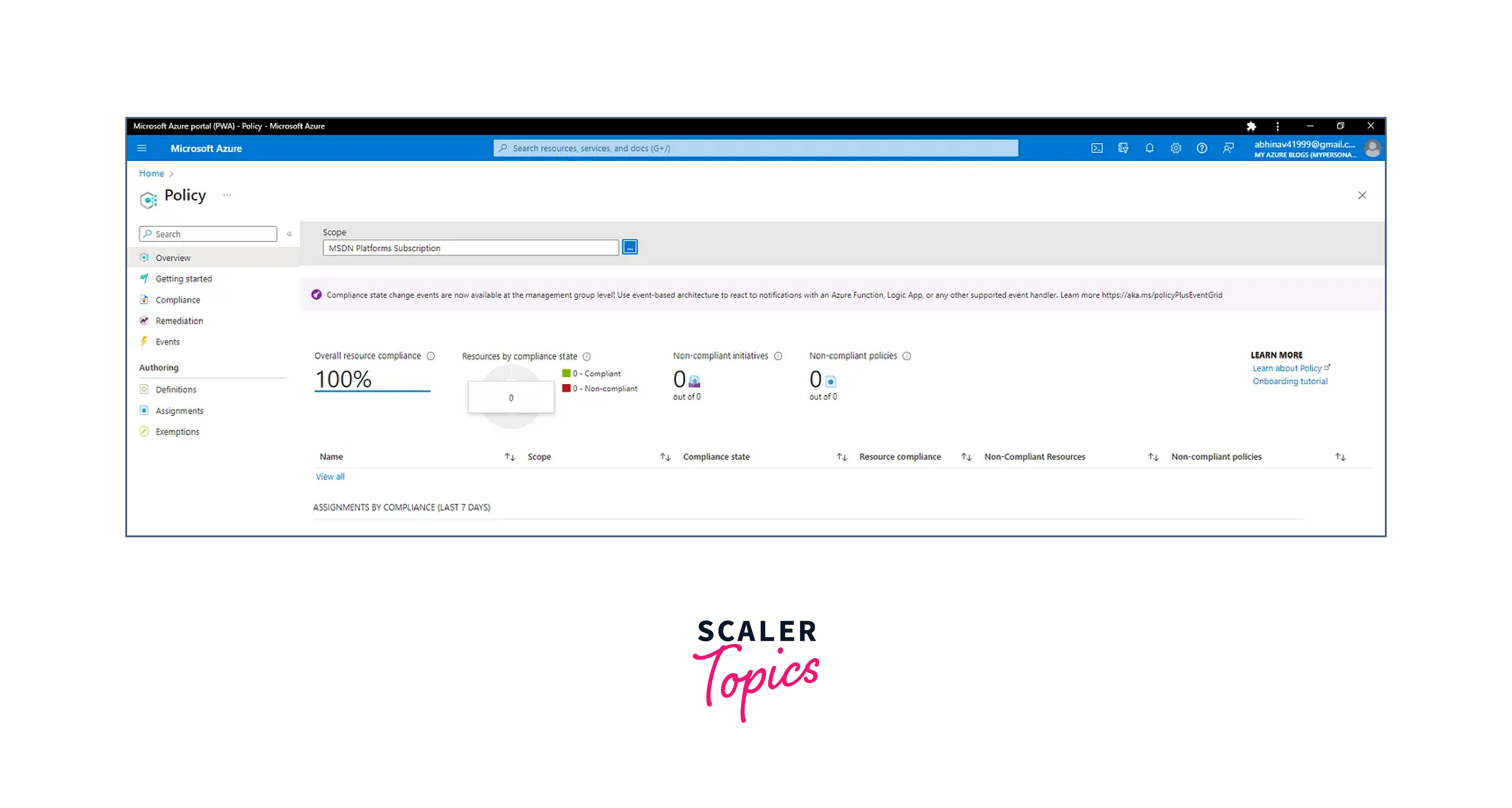
- Custom Definitions:
For specific requirements, create a custom policy definition. Go to ‘Definitions’ in Azure Policy and click ‘+ Policy Definition’. Here, you can specify the policy logic using JSON format.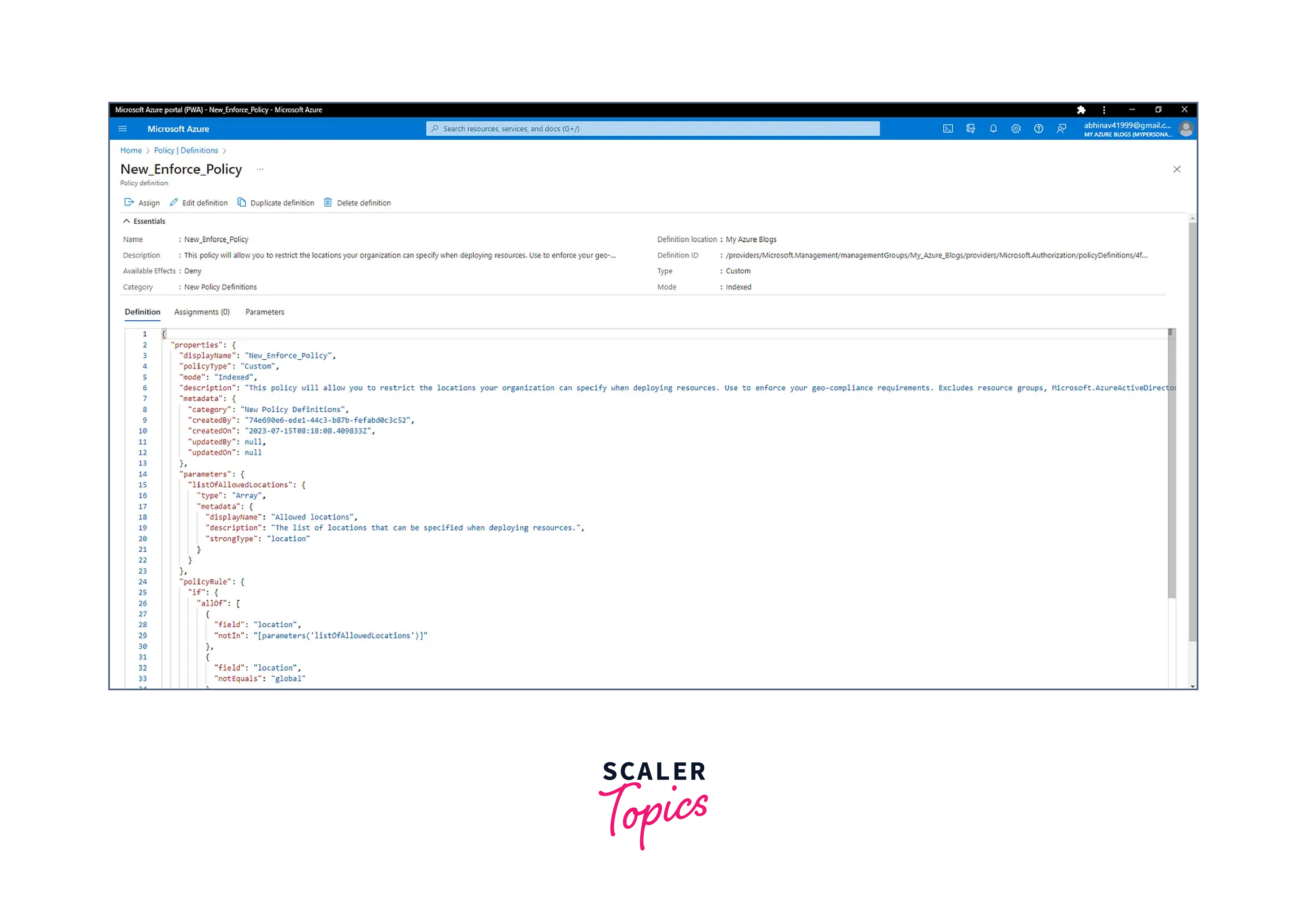
- Built-in Definitions:
-
Assign Policy:
- Once you have selected or created a policy definition, assign it to your resources. Navigate to ‘Assignments’ in Azure Policy.
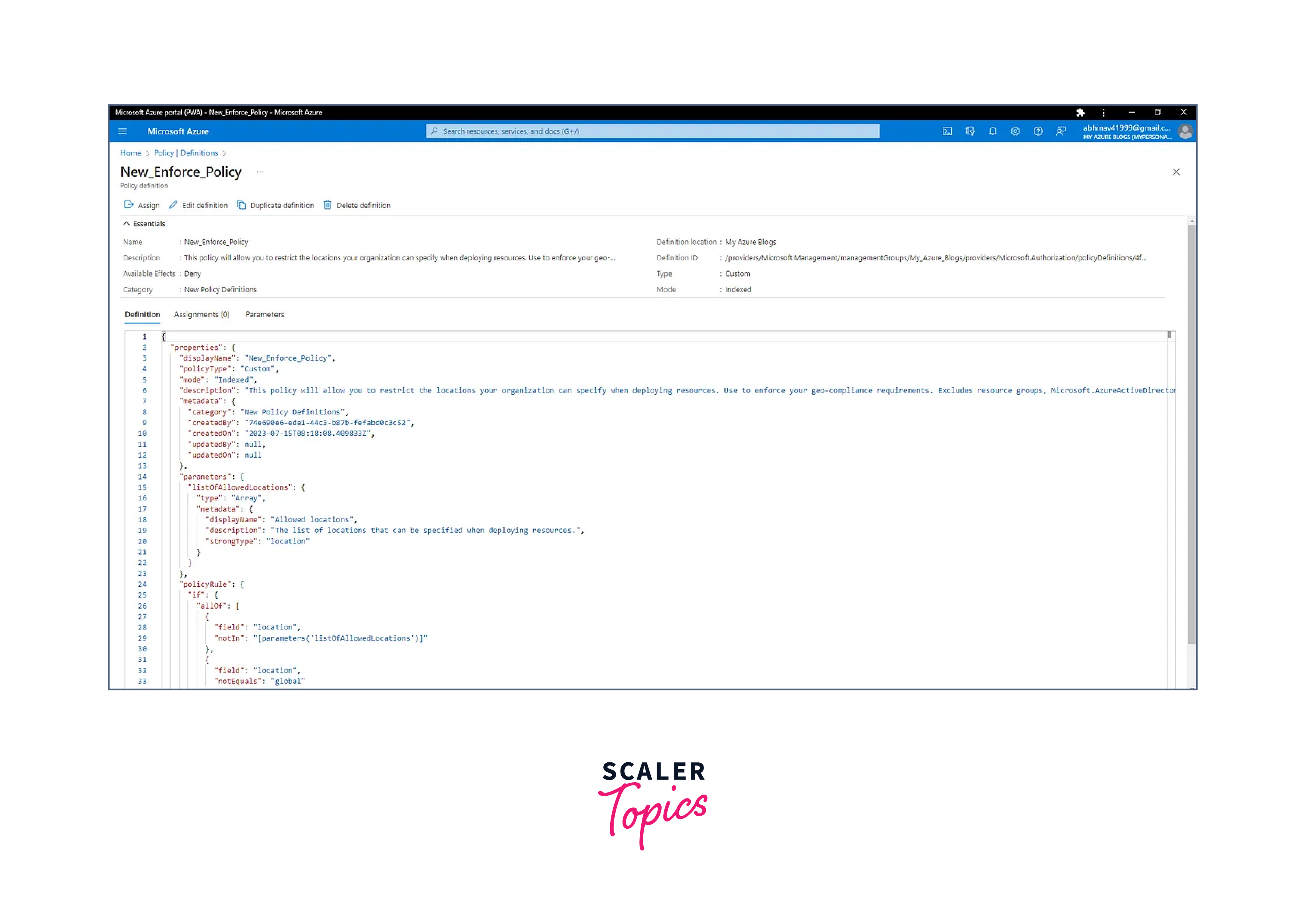
- Click ‘+ Assign Policy’ or ‘+ Assign Initiative’ (for a group of policies).
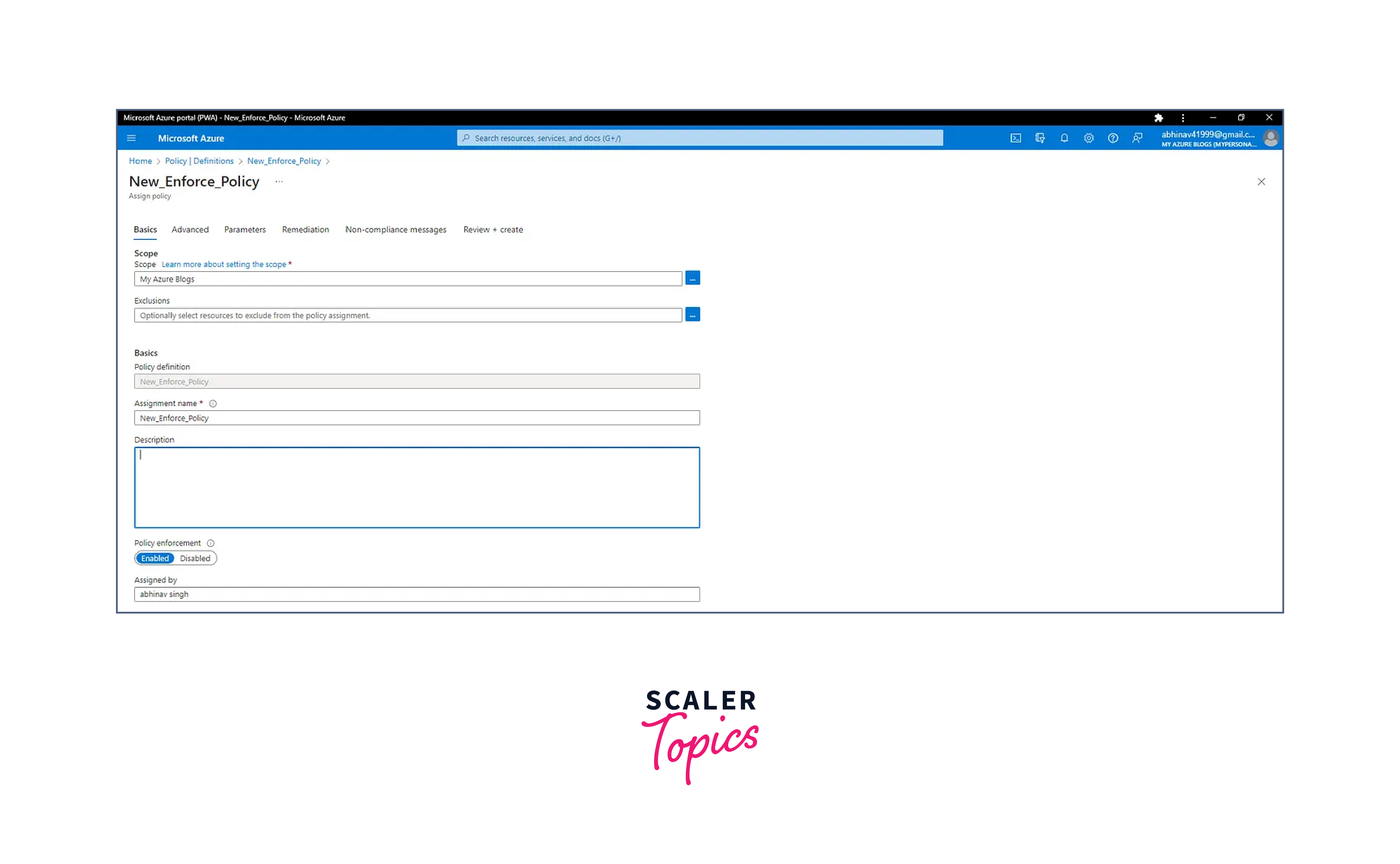
- Specify the scope of the policy (subscription, resource group, or individual resources).
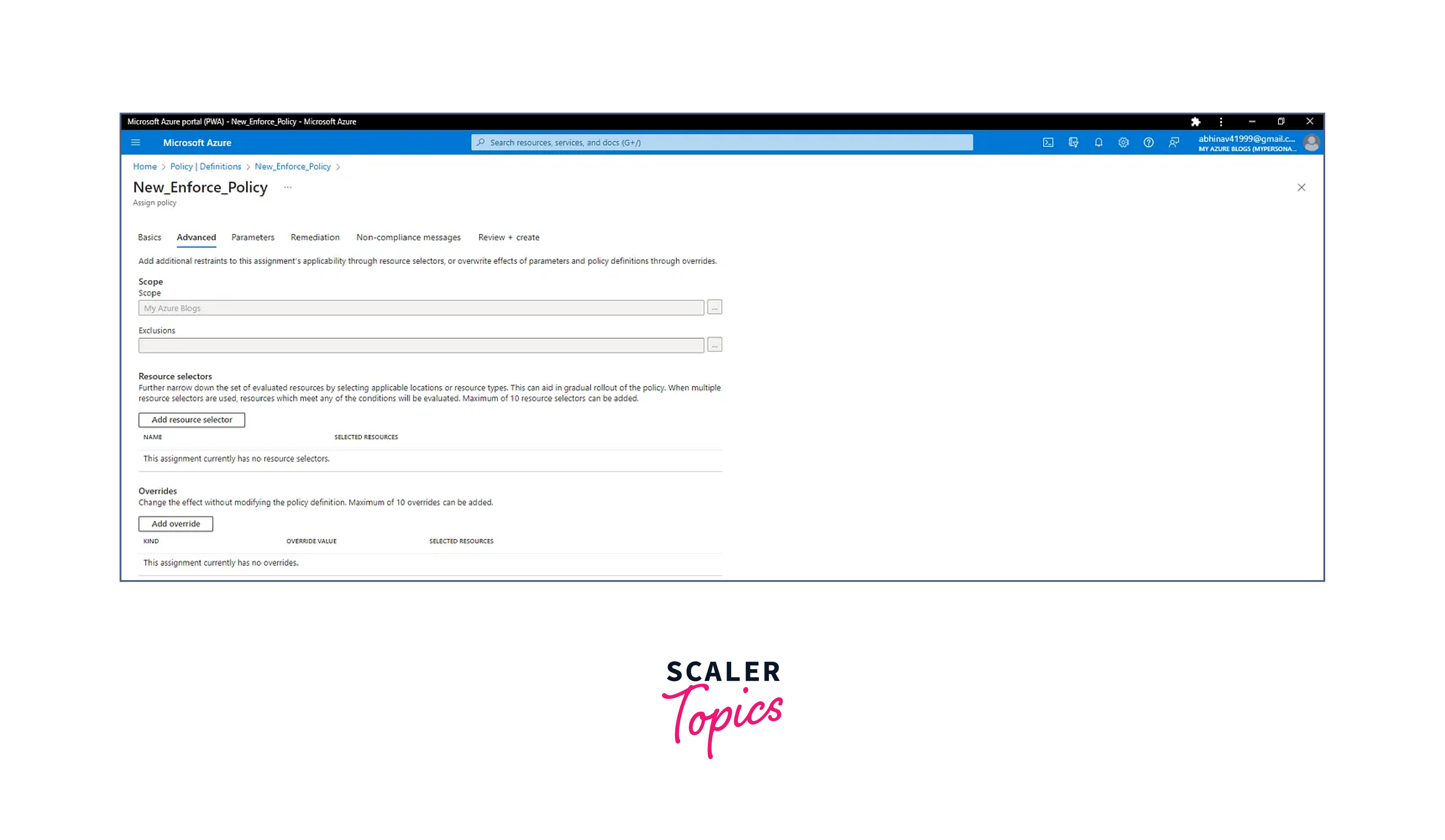
- Configure the policy assignment by setting parameters and remediation actions if necessary.
- Once you have selected or created a policy definition, assign it to your resources. Navigate to ‘Assignments’ in Azure Policy.
-
Review and Adjust Assignments:
- After assigning policies, it’s crucial to review their impact. Use the ‘Compliance’ tab in Azure Policy to view the compliance status of your resources.
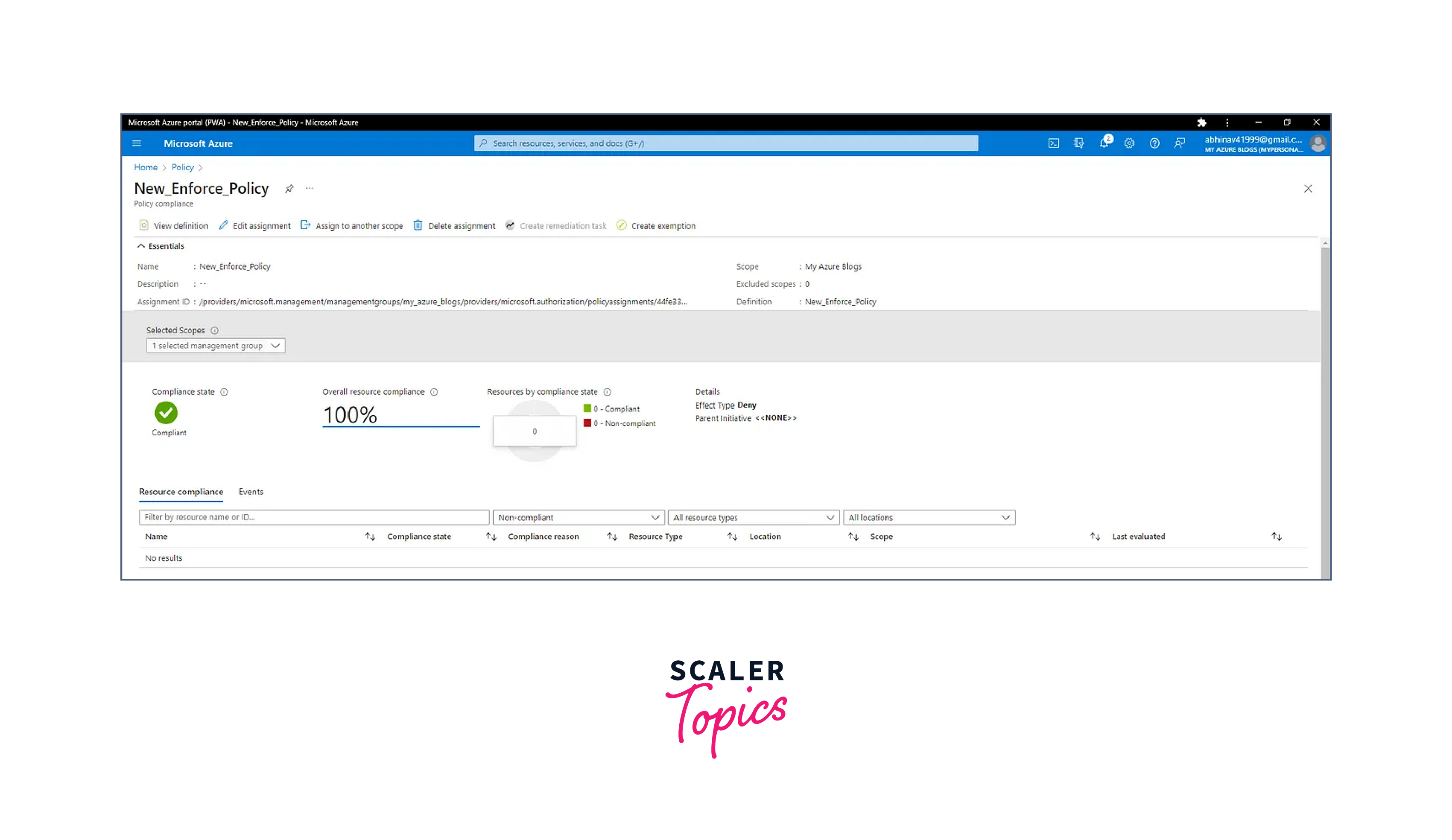
- Adjust policy assignments as needed based on the compliance data and operational requirements.
- After assigning policies, it’s crucial to review their impact. Use the ‘Compliance’ tab in Azure Policy to view the compliance status of your resources.
Best Practices for Implementing Azure Policy
- Leverage Azure’s built-in policy definitions as a starting point. These policies are based on common compliance requirements and best practices, offering a solid foundation for governance.
- Group related policies into initiatives for broader governance objectives. Initiatives simplify management and ensure that all aspects of a particular compliance goal are addressed.
- Cloud environments and compliance requirements are dynamic. Regularly review and update your Azure Policy definitions and assignments to ensure they remain relevant and effective.
- Combine Azure Policy with other Azure governance and management tools like Azure RBAC and Azure Monitor for a holistic governance approach. This integration ensures a comprehensive coverage of security, compliance, and operational needs.
Examples
- Implement a policy to ensure all resources are deployed in specific regions, addressing data residency and sovereignty requirements.
- Enforce a policy that mandates the use of secure transfer (HTTPS) for all Azure Storage accounts, enhancing data security.
- Apply a policy requiring all resources to have specific tags, aiding in organization, cost tracking, and resource management.
- Use a policy to restrict the sizes of Azure Virtual Machines that can be deployed, optimizing costs and resource utilization.
Conclusion
- Azure Policy is an indispensable tool for maintaining compliance and governance in Azure cloud environments, offering automated enforcement and real-time monitoring capabilities. With its customizable policy definitions and initiatives.
- Azure Policy provides scalability and flexibility to meet diverse organizational needs and compliance requirements. It works best when integrated with other Azure governance tools like Azure RBAC, forming a comprehensive governance framework.
- Regular updates and reviews of Azure Policy definitions and assignments are crucial to keep pace with the evolving cloud landscape and changing regulatory demands.
- By enforcing consistent governance rules, Azure Policy not only enhances security but also improves operational efficiency and resource management in Azure cloud deployments.
